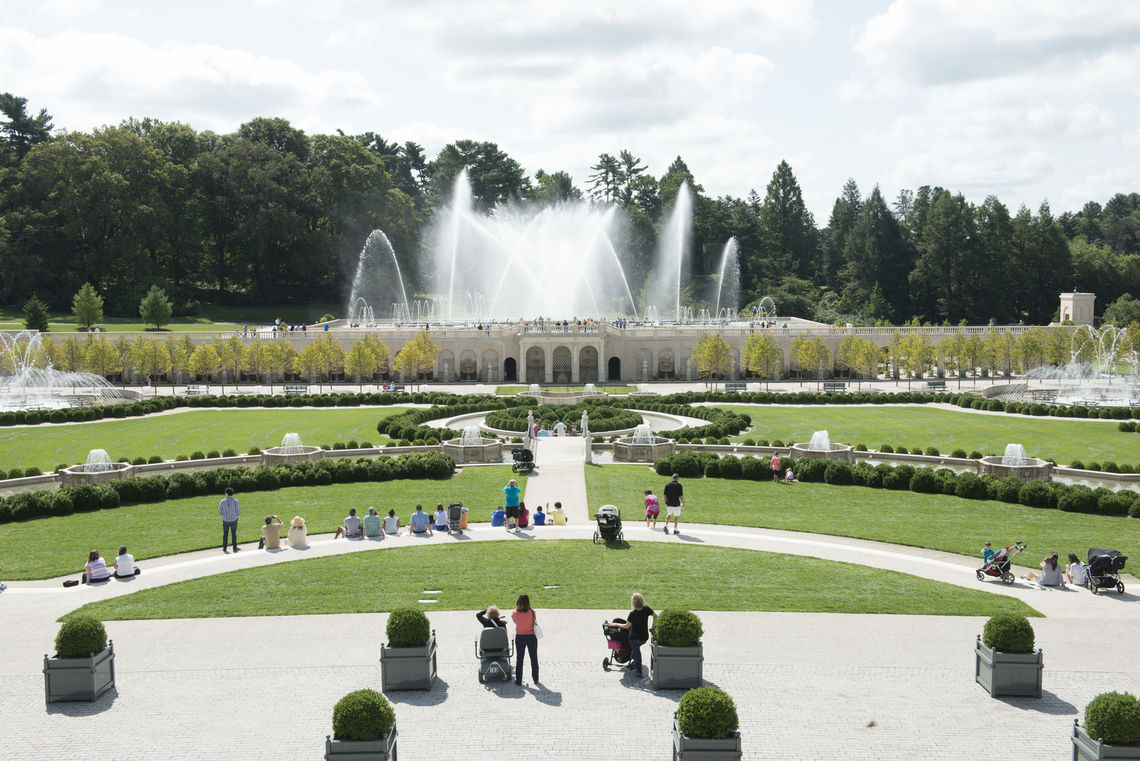Longwood Gardens Main Fountain

The Main Fountain Garden
Old world charm meets modern technology with the construction of the reimagined Main Fountain Garden in Pennsylvania’s Longwood Gardens – one of the premier horticultural display gardens in the United States. This $90 million project involved replacing the aging infrastructure supporting the Gardens and providing new engineered systems and enhancements to the landscape, site, and fountains while also retaining the European aesthetic intended by Pierre S. du Pont, the Gardens’ founder and designer. Revitalization plans called for the restoration of the historic Main Fountain Garden, its rectangular fountain basin, classic stonework, and the preservation of the existing pump room for use as a museum.
Longwood’s goal was to enhance the visitor experience by ensuring the visitor would never notice the complicated interworking of the fountain or be disturbed by the maintenance or noise generated to keep it functional. Urban Engineers’ design team, led by Project Manager David Parmiter, suggested that the fountain water, propane gas, and power distribution be contained in a network of underground tunnels and mechanical rooms to allow the systems to be maintained at any time without impact on the visitor experience.
A design challenge was to provide heating, cooling, and dehumidification in the underground structures in a manner that would be invisible and inaudible to garden visitors. The engineering solution was to use a geothermal condenser water loop system with an offsite well field which would, in addition to using engineered soils and pervious surface materials that reduce the site’s stormwater runoff, support Longwood’s mission to be a good steward to the environment.
longwood illustration
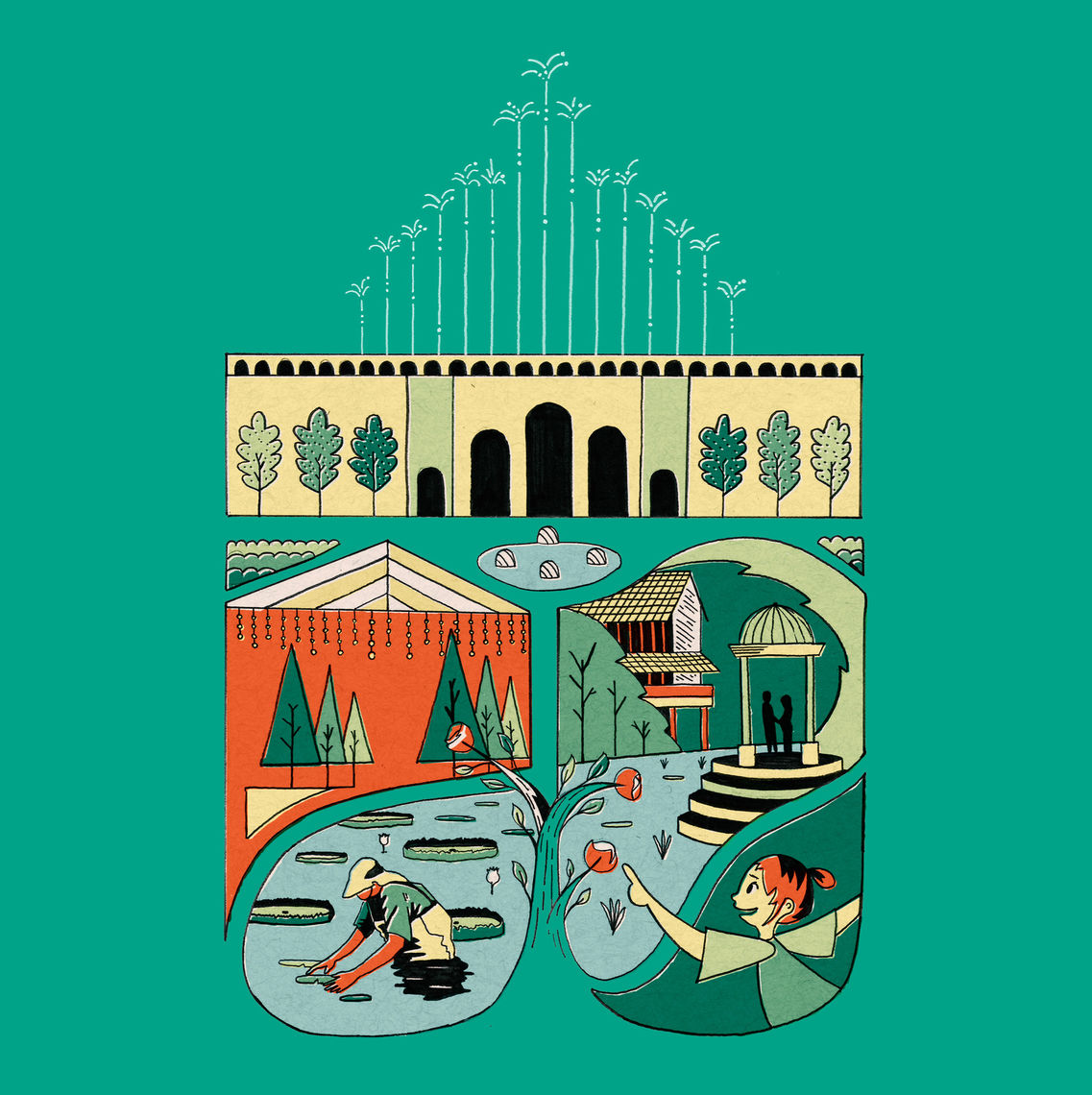
Going Underground
One of du Pont’s enduring contributions was the Main Fountain Garden. Completed in the 1930s, the fountains combined French and Italian design elements with American electrical technology. But after decades of operation, the systems had become unsustainable. A variety of stakeholders who had a variety of needs – but all had the same vision of restoring the historic fountain garden to du Pont’s original vision – were pulled together to complete this project successfully. The goal was to make the fountain a modern fountain system in the true engineering style of du Pont.
Longwood’s maintenance staff had to work with the existing system that was originally designed in the 1930s, and wanted something that could be efficiently maintained, accessible, and wouldn’t interrupt the visitor experience when they worked on the fountains. The solution consisted of a 50,000 square-foot, two-story underground pump house that handles all of the fountains systems, as well as access tunnels that allow for maintenance on all of the fountain’s functions.
The new structure, which houses the fountain equipment and horticultural and facilities workrooms, is ventilated from an underground mechanical room using a concealed air intake. The entire underground network of tunnels and remote pumping control rooms are ventilated, conditioned, and de-humidified. The roof of the new structure forms the basin for the main fountain display.
Longwood wanted their main fountain shows to begin earlier in the year and possibly extend further into the fall. Freezing was the limiting factor. To lessen the chance of water freezing and to extend the fountain display season, a 67,000-gallon underground heated water tank was created. The fountain heating system was engineered to allow operation of the fountains in colder weather at both ends of the season.
longwoodgardens2017 04
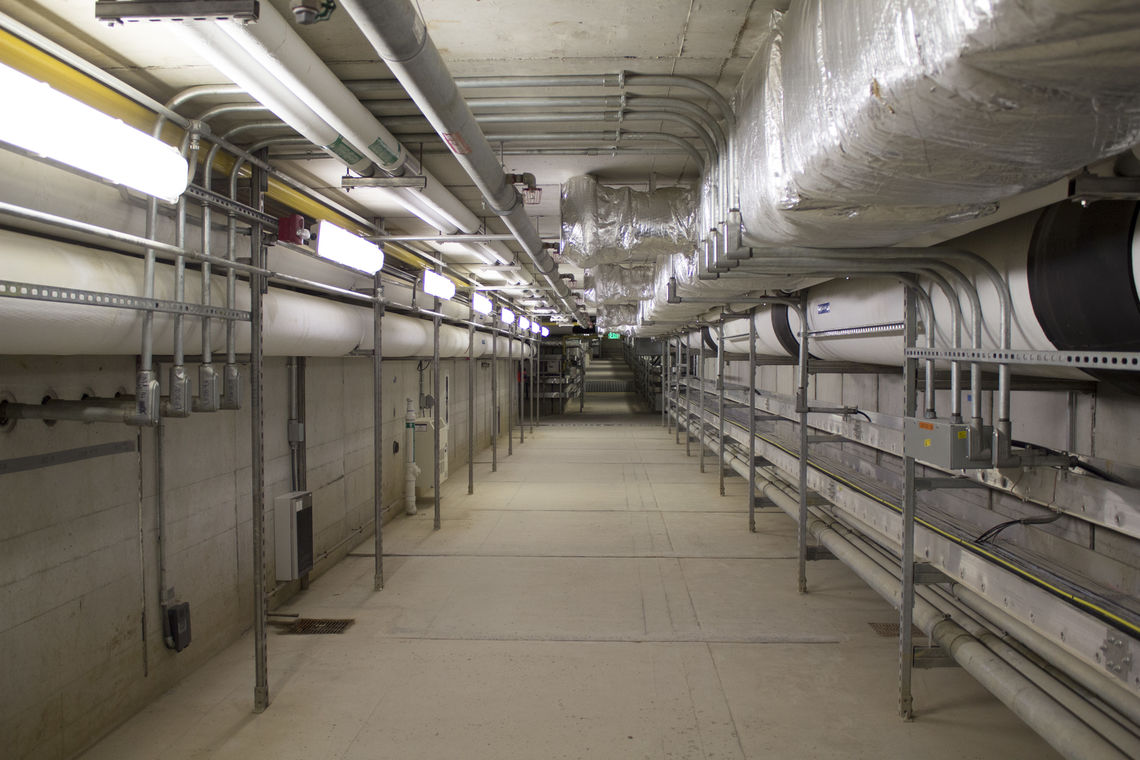
An Earthly Thermostat
The design team engineered a geothermal system as a way to provide an efficient, quiet, odor free energy source that could not be seen. Geothermal energy from the ground was used to heat and cool the underground pump house and network of tunnels. In the cooling season, heat is extracted from the pump house and put into the ground. The heat dissipates as the water travels close to 400 feet into the earth, and the cooler water coming out of the wells is used to cool the building. In the winter time, it does the reverse. The only energy exerted to do this is electricity, avoiding the use of fossil fuels. Water is generally cooled by unattractive metal towers above ground. The geothermal solution is efficient and sustainable, and fits with Longwood’s goal to be a good steward of the environment and to make the gardens a world-class destination.
To create this geothermal system, 35 wells were drilled at an average of 385 feet into the ground. The system successfully provides 91 tons of cooling capacity into the tunnels and two-story underground pump house. For comparison, a typical house has two to three tons of cooling. Though this type of system is more expensive to build, engineering professionals would be wise to consider using geothermal energy in cases like these when it is in the best interest of the public to minimize the impact of the system on the surrounding environment.
Sustainable Considerations
In the garden’s original design, stormwater had not been considered. It was assumed runoff would drain into local streams. To comply with modern regulations, many stormwater management ideas were considered.
Due to the aesthetics and feel of the site, a detention basin was not desirable as it would require modifications that would be visible to patrons of the garden. It was decided that engineered soils would be the best solution to address the issue. This allowed for the garden itself to serve as the stormwater basin, storing runoff underground in the soil. The engineered soil consisted of different materials that are porous enough for water to run through, yet strong enough to withstand the impact of the hundreds of thousands of visitors to the gardens every year. Longwood wanted the fountains themselves to be warm and welcoming and for kids to be able to play in the grass, as opposed to a place that felt inaccessible and would not allow patrons to fully explore the garden by limiting them to walking paths. The engineered soils solution allows for the soil to retain the stormwater, while also hosting hundreds of people at a time for shows and events on the grounds. The engineered soils used can hold stormwater from a 100 Year Storm. This solution also led to no additional stormwater runoff coming from the site into the local environment.
While addressing other sustainable considerations, the fountain design consultant decided for efficiency to use variable frequency drives on the water systems, making adjusting the amount of water similar to a light dimmer system in a house. By utilizing this type of drive to control the flow of the water, the speed of the motor can be more closely monitored, saving energy consumption. The original fountain had two 100 horsepower pumps that controlled all of the fountains effects. The new design using the variable frequency drives consists of smaller pumps that each control individual effects, reducing the amount of energy and water used. This feature – in addition to the geothermal loop that heats and cools the facility without burning fossil fuels – makes the site much more sustainable.
longwoodgardens2017 05
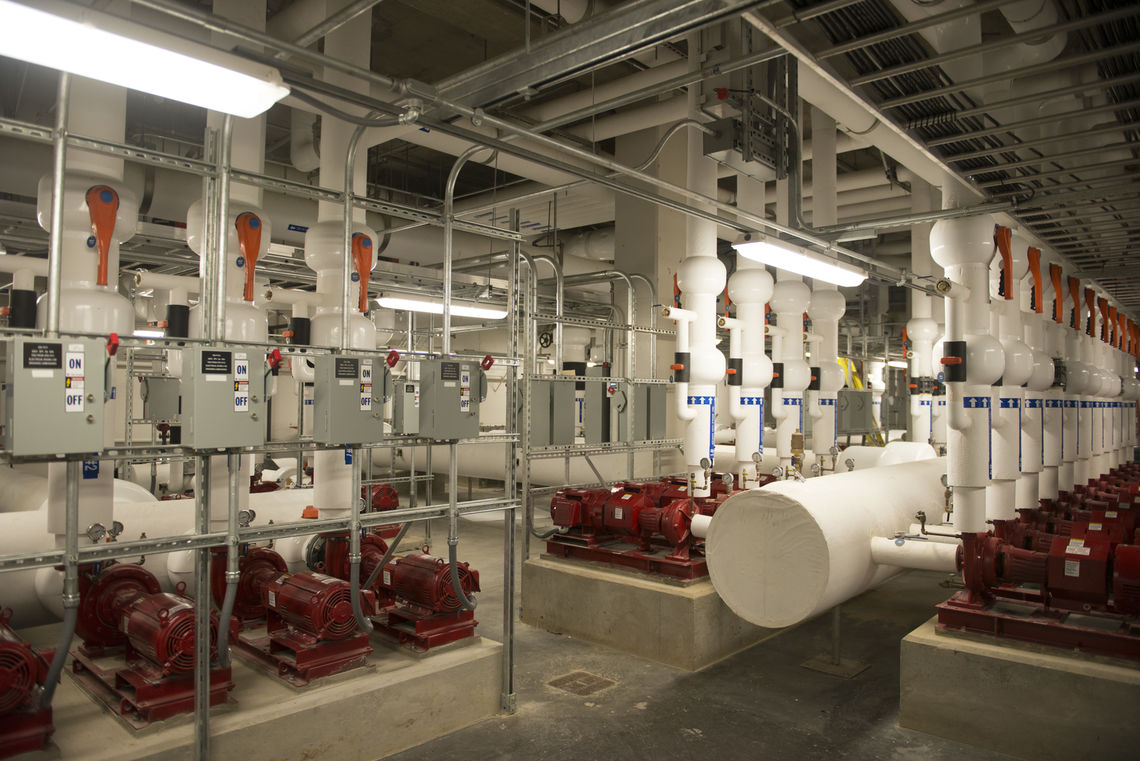
Utilizing Electricity
A critical part of the project was replacement of the deteriorating and failing 80-year-old underground utilities, including water, drainage, and power. These utilities crossed the site selected for construction of the new underground pump rooms. To allow the vast excavation to occur without disrupting other attractions at Longwood, the utilities were rerouted around the site.
The site power distribution was redesigned to upgrade the voltage distribution system. Lighting was an integral part in delivering a fountain worthy of being called a world-class destination. Specialized theatrical LED light systems were selected by the lighting consultant to produce improved and diverse colors that were not previously available to the fountain before the revitalization. Each installed light can be individually controlled and coordinated, which in turn saves energy. Previously used incandescent lights were less efficient and could not be individually controlled.
The engineering team’s design includes a power distribution sectionalizer that provides capacity to also meet the future electrical needs identified in the Longwood Gardens’ 40-year master plan. In addition, a new 10-megawatt electrical substation was designed for placement on an adjacent site to provide back-up power for the new fountains and other facilities to support future growth.
longwoodgardens2017 06
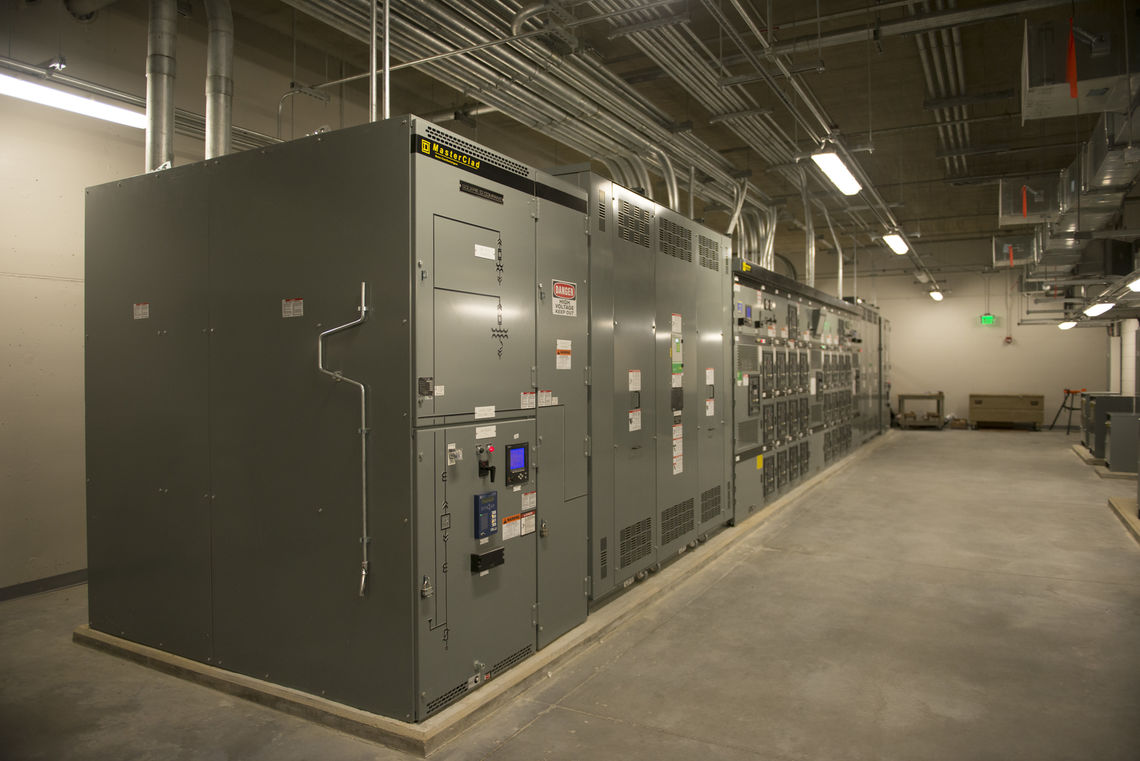
Project Success
A fair measure of success for a project is the owner’s satisfaction with the end result. Urban played an integral role on this project by providing civil, site, mechanical, electrical, plumbing, and fire protection engineering services. When the gardens held the grand opening, the response was overwhelming, with national and international media swarming in to cover the revitalization of the fountain. The new Main Fountain Garden has attracted more than 600,000 guests to Longwood and received rave reviews since returning on May 27 of 2017
“The enthusiastic response our Main Fountain Garden has received has exceeded our expectations,” said Longwood Gardens President and CEO Paul B. Redman in a statement. “Our guests asked for more fountain performances and we are pleased that we can make that happen and continue to run our fountains through October.”
The fountain season was originally slated to end September 30, so the project is already satisfying Longwood’s desire to extend its season. In addition to the improved accessibility this gives the general public to see the new facility, it will lead to increased revenue for Longwood itself. The project is the culmination of the legacy and vision of Pierre S. du Pont, combining classic landscape design with stunning architecture, innovative technology, and extraordinary fountains, including 1,719 swirling jets that can reach as high as 175 feet and 30 jets that combine water and flame.
longwoodgardens2017 03
